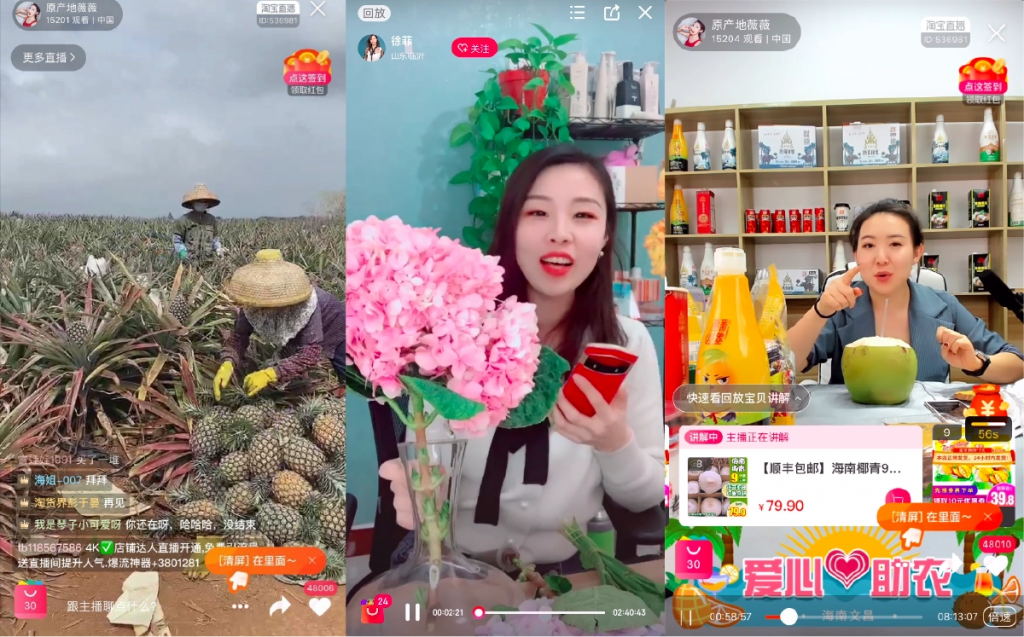Social Synergies investigates the social structures – both seen and unseen – that underpin food production and consumption.
Pinduoduo might be the biggest online platform you’ve never heard of. With over 630 million monthly users, it is one of the largest Information Communication Technology (ICT)-mediated supply chain systems, connecting agriculture to consumers, as well as an expanded market of products throughout China.
In the past five or more years, ICT-mediated food-sharing or food systems applications have emerged as tech that helps augment collective action towards growing, [re] distributing, cooking and eating collaboratively. The food-waste-mitigation app, Olio, is one of the largest and longest-standing platforms, connecting consumers to shops and neighbors to incentivize food redistribution in over 50 countries worldwide. In one of Olio’s market research surveys, people said “they were physically pained [to be] throwing away good food”. In the UK, the Too Good To Go app saves food in shops and restaurants from going to the bin and rather into domestic kitchens.
Technology has been a key player in reaching audiences and allowing food to be redistributed from its agricultural origin. For example, Oddbox in the UK saves wonky or excess fruit and vegetables from farmers and sells veg boxes directly to consumers. 40% of food waste comes from this ‘imperfect’ cosmetic classification, and Imperfect Foods in the USA operates on this principle. Though some insist saving wonky veg isn’t the real problem – and that imperfect vegetables are indeed used in things such as animal feed – it is another baby step to raising awareness and finding new avenues for food chains. These are processes and redistribution networks that would have been hardly possible without the level of connectivity we possess today.

The pandemic triggered a need that went beyond saving wonky vegetables or excess food from a neighbor. Suddenly our food systems were thrown into disarray – farms could no longer send produce to restaurants and meatpacking plants became COVID hotspots. Although many businesses did what they could with immediate effect, compiling veg boxes or meal kits, but more was needed to get mass quantities of produce from farmers to consumers as grocery aisles went empty and restaurants closed.
As an agricultural source, the Pinduoduo platform in China has been one of the most effective tools for redistributing market streams – connecting farmers to consumers with a C2M (consumer to manufacturer) system. Alibaba-owned Taobao and JD.com have also been influential in helping rural farmers survive since the pandemic struck. This new C2M model is a step away from the familiar B2B (business to business model). Pinduoduo has created a platform that has found success in what at first may have seemed a daunting and impossible challenge of shifting large quantities of food in direct exchange.
During the pandemic, food waste increased from 30% to 40% in Europe, partly due to the inability to reformat food systems such as catering supply chains. During the pandemic, Pinduoduo came into its own, and has been instrumental in redirecting supply chains to mitigate food waste and save local delicacies from disappearing entirely. Whilst milk and champagne were being poured down the drain in the West, Pinduoduo began a campaign to help connect farmers to consumers in urban environments and across the country. Using TikTok’s competitor, Kuaishou, farmers live streamed what they had available, presenting an opportunity for consumers to buy their produce and have it delivered directly to their homes. Kuaishou was a particularly effective platform to work in conjunction with Pinduoduo, as it has a strong uptake of users in rural locations. Taking cues from influencers, farmers were able to participate in the live streaming e-commerce market in order to shift their produce in the midst of a crisis. Big companies offered to apply their logistic networks to help these producers in need.
Taking cues from influencers, farmers were able to participate in the live streaming e-commerce market in order to shift their produce in the midst of a crisis.
A shining example is how the livelihood of an intensive lily-bulb farming area in China was bolstered by the Pinduoduo platform. A large producer of the short shelf-life delicacy, Lintao County was in danger of its bulbs going bad until Pinduoduo facilitated the sale of over 3 million tons. After some local liaisons and a few cooking live-streams, demand was met with 1.2 million purchase orders. Another influencer helping to join up these dots is country life blogger Liziqi ; she has highlighted food and cuisine of rural China to her over 15 million subscribers on Youtube.
Another form of redistribution over the live-streaming e-commerce was the practice of ‘group buying’ with friends or social networks, just as a wholesalers might snap up large quantities of goods. This group buying or ‘team buying’ as it is know (Tuán Gòu 团购) is a close relative to the cooperative model of food distribution. By buying in bulk groups are able to secure lower prices for goods that are then distributed amongst members.
The live streaming e-commerce market in China is worth an estimated $66 billion, and is only expected to grow. Pinduoduo claims 800 million buyers, and wants to be “the world’s top grocer.” Another player in the C2M agricultural field, Taobao aims to attract over 200,000 rural farmers into its live streaming e-commerce platform, promising to provide training workshops for new recruits. As platforms, these mobile apps go beyond commerce and into the realm of social impact and intelligence. This social cause of supporting rural farmers with your wallet whilst preventing the food going to waste goes beyond monetary value. Additionally, some of the produce featured and promoted are local specialities, ensuring heritage species continue to contribute to biodiversity. By creating a platform where farmers and consumers are able to participate and interact, platforms like Pinduoduo, Taobao and JD.com have helped to facilitate community and create networks of resiliency.

The pandemic completely contributed to the acceleration of e-commerce used in this way, and it will only grow. Songxiaocai, a Chinese B2B e-commerce platform for agriculture, is finding solutions for vegetable picking, distribution and after-sales services. The inclusion of blockchain technology is also set to encourage future transparency and trading in the sector. This technology that has been applied to finance, data sharing, the Internet of Things and more, is set to help certify organic and fair trade products, identify waste in supply chains and deter food tampering or false advertising. Walmart has already adopted the use of the technology to trace contaminated food, and Nestlé uses blockchain to verify the origins of its Rainforest Alliance products.
In his Food Systems Podcast series Sandeep Pahuja of IDEO stated that “Our food system isn’t broken, it was designed this way.” Hopefully these new C2M methodologies will contribute to more democratic and sustainable distribution models in the future to come.





